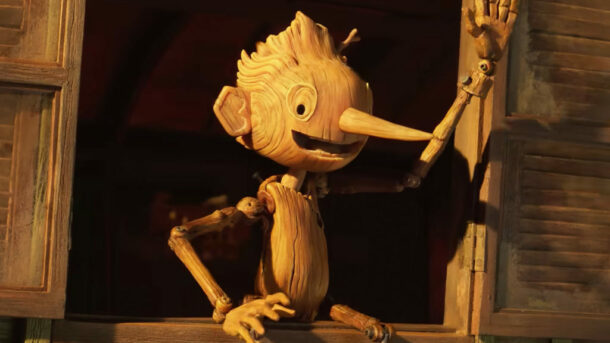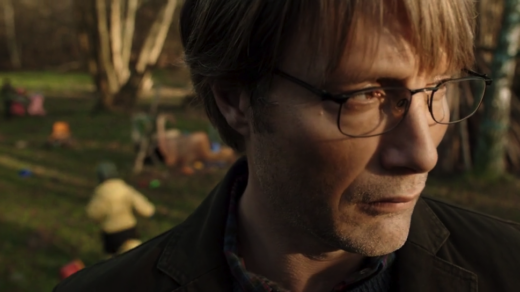Lights, camera, stop-motion action! If you’ve ever been mesmerized by the ingenious movements of inanimate objects coming to life on the big screen, you’ve witnessed the enchanting artistry of stop-motion animation. At its core, stop-motion animation is a technique that brings inanimate objects, puppets, or models to life through a series of meticulously captured frames. Each frame represents a minor movement of the characters or objects, and when these frames are played back in sequence, the illusion of fluid motion is created. You might remember it as the creative technique used in many classic Christmas movies!
Stop-motion animation is more than just a filmmaking technique; it’s an art form that allows filmmakers to craft unique narratives with a tangible touch of craftsmanship. The stop-motion process demands patience, precision, and passion from its creators, who painstakingly manipulate characters and sets to perfection. As a result, each frame becomes a labor of love, and the final movie becomes a work of art that resonates deeply with audiences of all ages.
In this blog post, we’ll delve into the fascinating history of stop-motion animation, exploring the iconic movies that shaped the genre and the pioneering artists who brought imagination to life. Let’s explore the art, the craft, and the enchantment that continues to make this form of storytelling a truly magical experience.
A Brief History of Stop-Motion Animation
Early Pioneers

The roots of stop-motion animation can be traced back to the early days of cinema when visionary pioneers like Georges Méliès and Willis O’Brien brought this magical technique to the silver screen. Georges Méliès’ groundbreaking 1902 film “A Trip to the Moon” showcased the potential of stop-motion animation, as it took audiences on an otherworldly adventure to the moon and back. This innovative use of animation set the stage for future filmmakers to explore the possibilities of this art form.
Proceeding Milestones
However, it was Willis O’Brien’s work on the 1933 classic “King Kong” that truly elevated stop-motion animation to new heights. Through meticulous frame-by-frame animation, O’Brien brought the colossal ape to life, captivating audiences with the realistic interactions between the giant creature and live-action actors. Since then, stop-motion animation has evolved, witnessing the rise of studios like Aardman Animations, responsible for beloved films like “Wallace and Gromit,” as well as Laika Entertainment, the creative force behind the critically acclaimed “Coraline” and “Kubo and the Two Strings.”
Today, modern stop-motion animation continues to captivate audiences worldwide, proving that the charm and artistry of stop-motion animation movies remain timeless and ever-inspiring.
The Fascinating Process of Creating Stop-Motion Animation
Getting Started
Behind the enchanting world of stop-motion animation movies lies a labor-intensive and creative process that demands meticulous attention to detail. The journey begins with a carefully crafted script and storyboard, outlining the story’s progression and character movements. Once the foundation is set, the real magic begins as skilled animators breathe life into the characters, frame by frame. Each movement, expression, and action is thoughtfully choreographed, requiring immense patience and dedication to achieve the fluidity that captivates audiences.
Techniques and Technology
Stop-motion animation embraces a diverse range of techniques, including claymation, puppet animation, and object animation. Claymation, in particular, involves molding and sculpting characters and props from clay, allowing animators to create intricate facial expressions and dynamic poses. Puppet animation, on the other hand, employs articulated puppets that are carefully manipulated during filming, while object animation brings inanimate objects to life in imaginative ways. Modern advancements in technology have revolutionized stop-motion animation, incorporating computer-generated effects and post-production techniques to enhance the final product.
While the process may be time-consuming, it’s the commitment of the animation team that makes the magic happen. The end result is a timeless piece of art that captures hearts and imaginations, reminding us of the beauty in the tangible, handmade creations that define stop-motion animation movies.
Iconic Stop-Motion Animation Movies
Fantastic Mr. Fox

Among these iconic films, one standout gem is “Fantastic Mr. Fox.” Directed by Wes Anderson, this 2009 stop-motion masterpiece brings Roald Dahl’s beloved tale to life in a visually stunning and emotionally resonant manner. The film follows the charmingly cunning Mr. Fox, voiced by the charismatic George Clooney, as he navigates a series of humorous and daring escapades to outwit a trio of villainous farmers. Through meticulous attention to detail and exceptional character design, “Fantastic Mr. Fox” effortlessly captures the essence of Dahl’s whimsical world, leaving viewers captivated by its witty storytelling and endearing characters.
The Nightmare Before Christmas

One of the most beloved and enduring stop-motion animation movies is “The Nightmare Before Christmas,” directed by Henry Selick and produced by Tim Burton. This imaginative tale follows Jack Skellington, the Pumpkin King of Halloween Town, as he stumbles upon Christmas Town and endeavors to put his own spooky spin on the holiday season. The film’s masterful blend of dark whimsy, catchy music, and intricate stop-motion animation has earned it a special place in the hearts of audiences young and old.
Coraline

In the realm of contemporary stop-motion animation, Laika Entertainment has been a driving force, enchanting viewers with stunning works like “Coraline“. “Coraline,” directed by Henry Selick and based on a book of the same name, delves into a dark and mesmerizing world where a young girl discovers an alternate reality behind a secret door. The wonderful and captivating stop-motion animation style that this film uses truly enhances the eerie, twisted look of the movie.
These films showcase the continued innovation in the art of stop-motion animation movies, proving that the medium’s allure remains as strong as ever.
The Role of Stop-Motion Animation in Special Effects
King Kong

One of the most iconic examples of stop-motion animation’s impact on special effects can be seen in the original “King Kong” (1933). Willis O’Brien’s groundbreaking work brought the colossal ape to life, forging the path for future filmmakers to explore the possibilities of integrating animated characters into live-action scenes. The mesmerizing interactions between Kong and the human characters felt remarkably convincing, thanks to the artful execution of stop-motion animation.
Star Wars

Post-King Kong, stop-motion animation continued to be used and refined as a special effect in movies. “Star Wars” famously utilized a variety of special effects to immerse viewers in a galaxy far, far away, and stop-motion animation was no exception. When Chewbacca and R2-D2 are interacting on the Millenium Falcon, they are playing a digital board game that uses stop-motion to achieve its holographic effect. In the sequel “The Empire Strikes Back”, stop-motion takes a more prominent role as it gives life to the giant AT-AT walkers during the battle for Hoth. This scene particularly shows that stop-motion animation, if done well, can keep up with CGI.
As filmmakers strike a balance between practical effects and digital technology, stop-motion animation stands strong as a testament to the enduring artistry and wonder of special effects.
Influential Stop-Motion Animation Studios and Filmmakers
Aardman Animations

Behind the enchanting world of stop-motion animation movies, we find a league of visionary studios and talented filmmakers who have left an indelible mark on the genre. Among the most renowned stop-motion animation studios is Aardman Animations, a British studio responsible for creating beloved characters like Wallace and Gromit, Shaun the Sheep, and Chicken Run. Their endearing storytelling, coupled with impeccable attention to detail, has earned them a dedicated global fanbase and numerous awards, showcasing the enduring appeal of stop-motion animation.
Prominent Individuals
In addition to the studios, individual filmmakers have played a crucial role in shaping the landscape of stop-motion animation. Tim Burton, a visionary director and producer, has championed the art of stop-motion animation, contributing to iconic films like “The Nightmare Before Christmas” and “Corpse Bride.” Additionally, Wes Anderson has made remarkable contributions to the world of stop-motion animation movies through his direction of films like “Isle of Dogs” and the aforementioned “Fantastic Mr. Fox”.
These influential studios and filmmakers have proven that the art of stop-motion animation movies is not just a niche genre but an enduring form of art that continues to inspire and captivate audiences worldwide.
Impact and Legacy of Stop-Motion Animation Movies
Authenticity and Tangibility
Stop-motion animation movies are well-known for their remarkable contribution to special effects in filmmaking. Unlike computer-generated imagery, stop-motion animation offers a unique tangible quality that seamlessly blends with live-action footage, creating a sense of realism and charm that captivates audiences. In an age dominated by digital effects, stop-motion offers a sense of nostalgia and connection to handmade craftsmanship that resonates with viewers. The attention to detail and the sheer passion poured into every frame infuse these movies with a distinctive charm that sets them apart from their CGI counterparts.
Hallmark of Creativity
Moreover, stop-motion animation movies have showcased the limitless possibilities of storytelling. The medium has proven that imagination knows no bounds, and the physicality of the animated characters and sets can evoke emotions that go beyond what traditional animation or live-action alone can achieve. As these films continue to inspire new generations of artists and filmmakers, their legacy as timeless classics will undoubtedly continue to shape the future of cinema.
As stop-motion continues to evolve, its legacy endures as a testament to the power of creativity and ingenuity in stop-motion animation movies, forever reminding us of the magic that unfolds when imagination meets the art of storytelling on the big screen.
Conclusion
As we bid farewell to our immersive journey into the enchanting world of stop-motion animation movies, one thing becomes abundantly clear: the allure of this timeless art form knows no bounds. From its humble beginnings as a pioneering special effect to its current status as a captivating storytelling medium, stop-motion animation continues to delight and inspire audiences of all ages. The dedication and creativity of talented animators and visionary filmmakers have given life to unforgettable characters and brought us on unforgettable adventures, leaving a lasting impact on the world of cinema.
While technology has evolved and new animation techniques have emerged, the magic of stop-motion animation remains undiminished. Its tangible and authentic qualities stand as a testament to the artistry and dedication of those who create it. Stop-motion animation movies, with their ability to blend imagination and craftsmanship, have carved a unique niche in the realm of filmmaking, capturing the hearts of both cinephiles and casual viewers alike.
And if you’re looking to capture the hearts of both cinephiles and casual viewers, enter The Film Fund’s film funding contest! By submitting a single sentence explaining your idea for a short film, you can win up to $10,000 in funding for your production. We have entries open for both documentary short films and narrative short films, and we cannot wait to see what ideas you bring to the table. Enter now!




